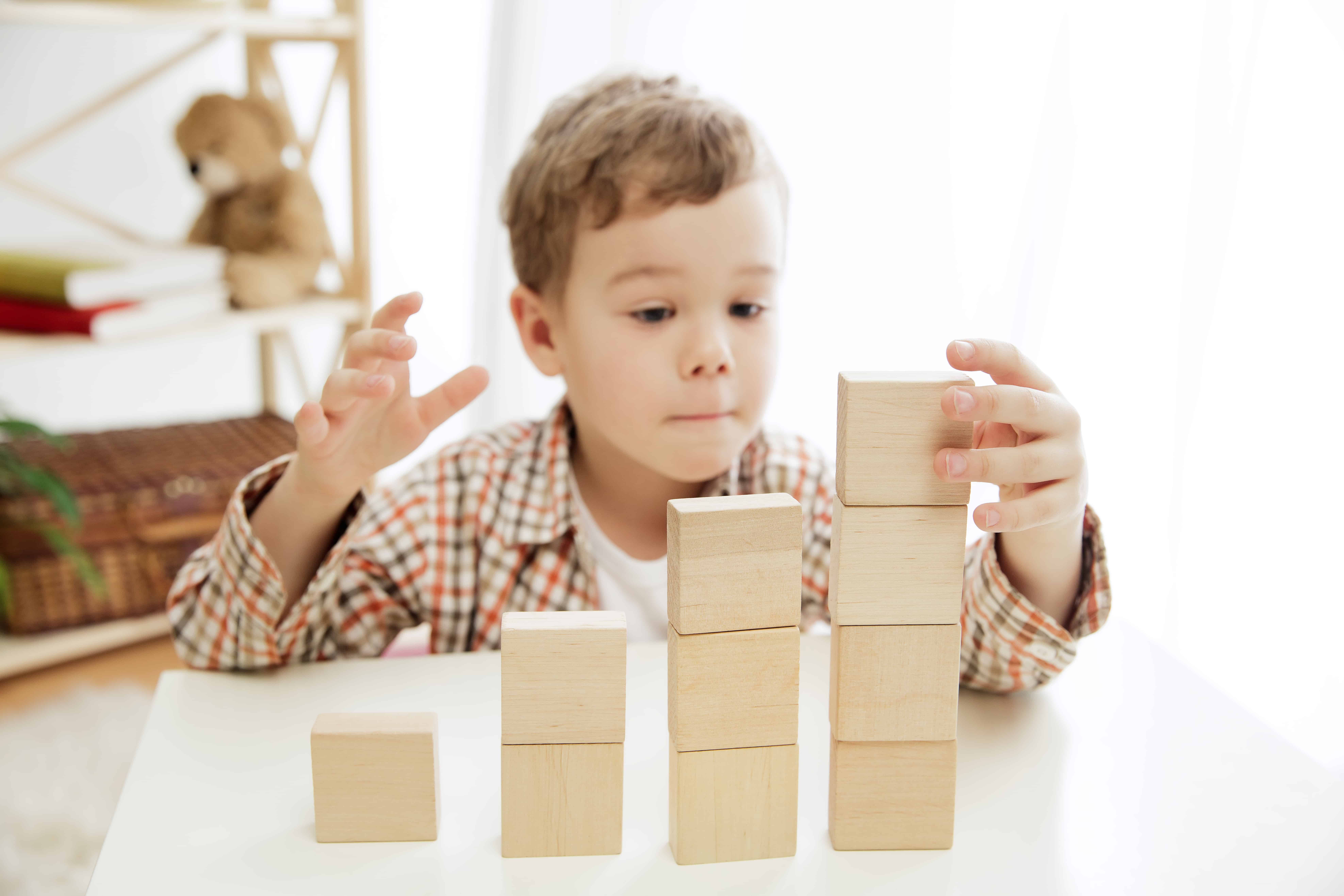There are BIG benefits to playing with toy blocks and we’re telling you why
Most children—including mom!—probably played with a set of blocks as an infant and toddler. It’s a toy staple in households and early childhood classrooms. As your child’s first love and first teacher, have you ever thought about how powerful this simple toy is when you first set them on the floor in front of your baby? If you’re anything like me, probably not; you just looked at them as a toy to entertain your baby for a few moments until it was on to the next toy.
Think about the phases in which a child plays with blocks from an infant to a 4-year-old. As an infant, they probably banged the blocks together, put them in their mouth and cried when you took a block from their tiny hand. As they become more verbal, the blocks become a tower; everything is “My block,” and frustration occurs when they don’t understand why the tall block tower tips over. As they prepare for kindergarten, your child’s block tower becomes a castle with roaring dinosaurs around it, but now they are planning how the castle will look with paper and crayons, and they use trial and error to get the structure just right while building. In all these scenarios, your child is experiencing social and emotional learning, vital skills to cope with in the big world ahead of them.
And now it’s you (mom) that guides your child through these block play phases by modeling positive behaviors and words. When your baby is banging blocks together, demonstrate the gentle touch you use when playing with toys. When they cry because you took a block out of their mouth, use a nurturing tone to tell them everything will be fine while explaining it’s time to clean up.
Young toddlers are notorious for not sharing and independent play. Use this phase as a time to teach taking turns and encouraging them to use their words when they are frustrated. Help them to understand their feelings but starting the conversation when you notice the change in behavior with something such as “Are you upset with mommy because I took the green block you wanted to use for your tower?” You are validating their feelings when you do this and create a safe space for them to express themselves. When the tall block tower has grown to a castle taking up the living room floor, let your child be the leader in the activity. Have them think of the design and materials they’ll use when building and assist when needed. This is also a great time to introduce responsibility with the simple task of having them clean up their creation before moving on to the next activity.
So, mom, the next time the blocks come out for play, remember that it’s more than just playtime, it’s a bonding and creative experience with your little one. In these moments, you are teaching positive mannerisms and language, self-esteem, sharing, problem-solving, leadership skills and so much more. Now your child has the building blocks for success as they move from playing at home to playing in the classroom and even to their first job. GO YOU, you’re an amazing teacher, and I bet you didn’t even realize it!
*Presented by the Early Learning Coalition of Hillsborough County | Originally Published in January 2022
Feature image: freepik.com/master1305


